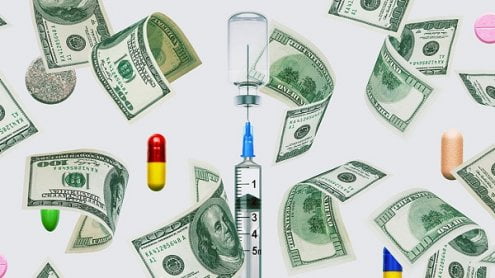How much does insulin cost in the US?
Insulin is a life-saving medication for people living with Type 1 and Type 2 diabetes. Unfortunately, the price of the most popular insulin brands has skyrocketed in the over the past decade, leading to a country-wide crisis where many people must choose between paying their bills and the monthly cost of their insulin. There have been many casualties as diabetes patients struggle to afford their medication.
Between 2002 and 2012, national spending on diabetes medications more than doubled from $10 billion to $22 billion and has likely increased more since then. A large part of this is due to an increase in insulin costs.
Over the last decade, the price of common insulin brands has tripled. The most expensive insulin, Levemir (manufactured by Novo Nordisk), cost $93 per vial in 2009 and has since jumped to $397 per 10 mL vial. Even less expensive insulin brands have become unaffordable, with the least expensive of the most common brands, Eli Lilly’s Humalog, jumping from $93 in 2009 to $275 in 2019.
Why is insulin so expensive in the US?
The following are a few reasons for the huge rise in the cost of insulin in the US:
Manufacturing costs
Insulin is a very expensive drug to produce compared to other medications. Recombinant DNA technology is required to create insulin-producing bacteria. The complexity and size of insulin mean that it is considered a biologic in pharmaceutical terms, making any generic v=or biosimilar version subject to a stricter and more expensive approval process by the Food and Drug Administration (FDA).
Because of the higher cost of producing biosimilar versions of insulin, generic versions only provide about a 20 percent cost reduction compared to the average 80 percent cost reduction for most generic medication. For example, Basaglar, the first generic insulin product introduced in December 2016, costs approximately $235.
Lack of competition
While manufacturing costs are high, one of the most significant factors as to why insulin costs are so high in the US is that 90 percent of the market by value is controlled by just three companies. Eli Lilly, Novo Nordisk, and Sanofi, the manufacturer of Lantus, which has seen similar price increases to Levemir and Humalog, have near-complete control over the insulin market.
Often, one of these companies will be the sole distributer of insulin within a country, effectively giving them a monopoly of that country. This allows them to dictate pricing. While some countries, like China and India, have domestic insulin companies that act as competition, there is no such company in the US that could help bring prices down.
Patents
Eli Lilly, Levemir, and Humalog, often collectively dubbed the ‘big three’, are not only able to essentially choose their own pricing due to the lack of competition, but they also play a significant role in why there is no other competition. While the high production costs of generic insulin also factor in, these large companies control the playing field.
They do so in several different ways. First, they take advantage of loopholes in the US patent system that allow their patents to last much longer, a process called patent evergreening. For example, it was shown that Sanofi had filed 74 patent applications for their insulin product Lantus. This has given the company the potential to keep their rights to their patent and fend off competition for another 37 years.
Another way these companies keep hold of the market and their patents is through lawsuits and a dispute settlement technique called ‘pay for delay’. With this type of agreement, the patent holder agrees to pay a generic manufacturer to hold off on bringing a generic version to market for a certain amount of time. For instance, Sanofi sued Merck when they announced plans to bring a biosimilar version of Lantus to market, with the generic manufacturer eventually stating that they were no longer pursuing the generic product.
—
Disclaimer: Please note that the contents of this community article are strictly for informational purposes and should not be considered as medical advice. This article, and other community articles, are not written or reviewed for medical validity by Canadian Insulin or its staff. All views and opinions expressed by the contributing authors are not endorsed by Canadian Insulin. Always consult a medical professional for medical advice, diagnosis, and treatment.


